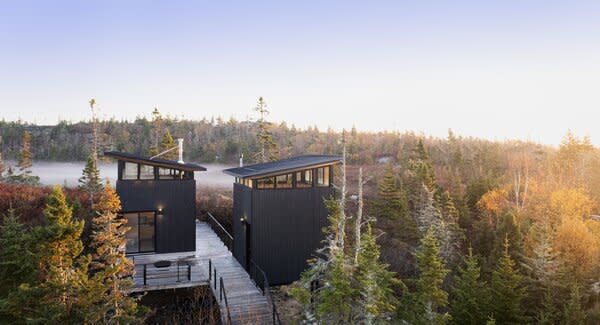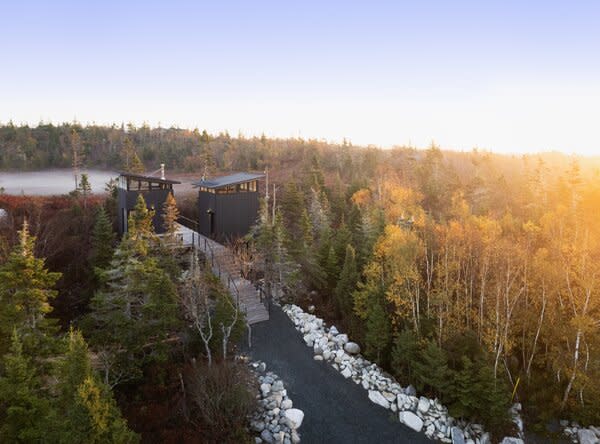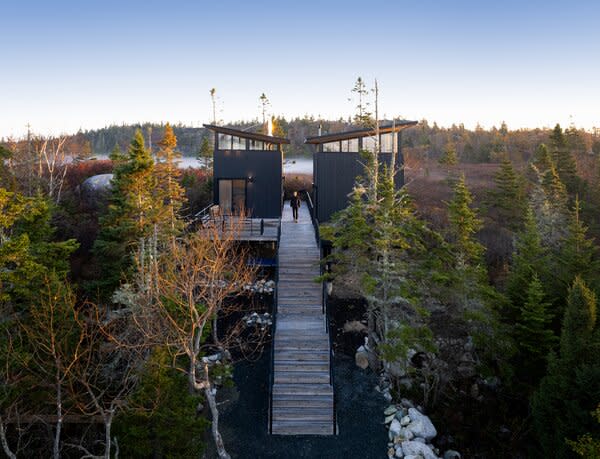Camping Turned Into Glamping After a Family Built Twin Tiny Cabins in the Woods
A raised boardwalk connecting the units enhances the owners’ favorite walking path on their parcel of wilderness in Nova Scotia.

Peter Braithwaite met his clients while they were both walking their dogs in Terence Bay, Nova Scotia. "We got to talking," Braithwaite says, and coincidentally, the design-build architect already knew of their parcel, a rustic 15-acre plot with coastal views and craggy footpaths. There’s a boreal forest with a barren running between it, he explains. He takes walks here all the time.
Greg Knapp and Robyn Traynor were already familiar with the architect’s work when they met, and had connected with his ethos. "We build more respectfully, not so heavy-handed and domineering on the natural landscape," explains Braithwaite.
Before their chance meeting, Greg and Robyn, who had one child at the time—they now have two—would retreat to the plot to camp. They’d "use the land, walk around, and enjoy nature," Braithwaite says. Initially, the couple envisioned a boat garage-slash-camping structure. But then "it evolved into a raised design to minimize impact on the land," says Braithwaite. The ground has "scars from previous ATV tracks," adds Greg, "so we knew that any significant traditional build would irreversibly alter the landscape."
See the full story on Dwell.com: Camping Turned Into Glamping After a Family Built Twin Tiny Cabins in the Woods
Related stories:




